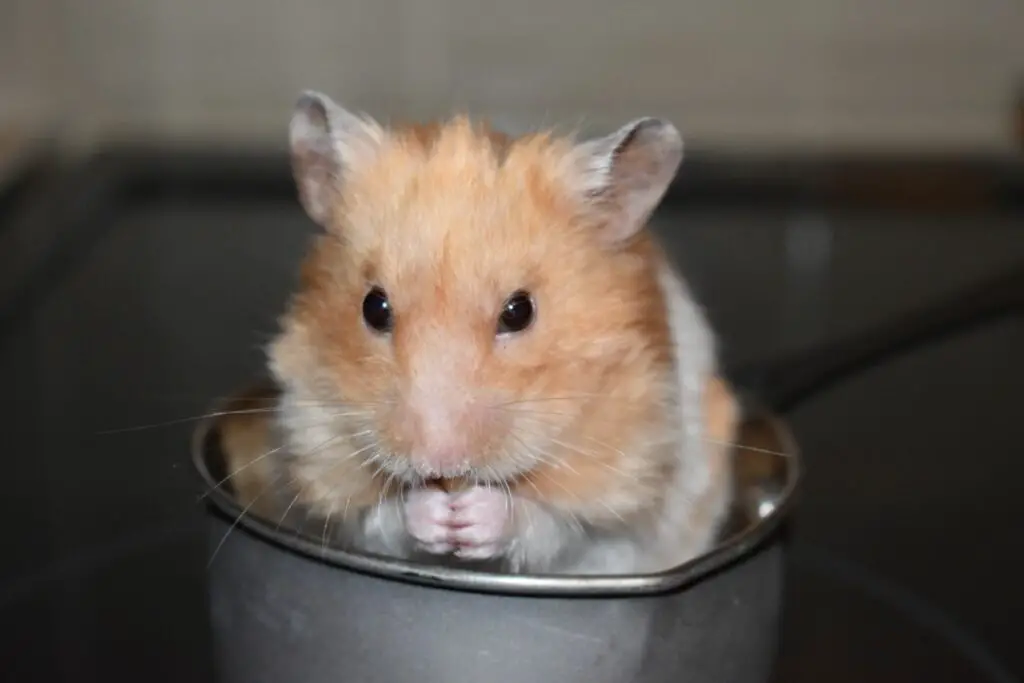Hamsters are adorable and fun-loving pets that can bring joy to any household. They are known for their playful personalities and cute looks. However, like all pets, they require proper care and training to live a happy and healthy life. One essential aspect of hamster training is potty training. In this blog post, we will discuss how to litter train your hamster, from understanding their behavior to effectively training them.
This guide applies to all of the 5 domesticated hamster species, though Syrians are often the easiest to train.

Understanding Hamster Behavior and Biology
Before we dive into the specifics of potty training, it’s essential to understand hamsters’ natural behaviors and biological functions. Hamsters are small rodents that are active during the night and sleep during the day. They are clean animals and prefer to have a designated area for their bathroom activities. Additionally, hamsters have a short digestive tract, which means they have frequent bowel movements and urination.
The Benefits of Potty Training Your Hamster
Potty training your hamster has several benefits. Firstly, it helps maintain a clean and hygienic living environment for both you and your pet. Secondly, it prevents unpleasant odors from accumulating in your hamster’s living space. Lastly, it helps prevent medical issues such as urinary tract infections and other health problems associated with poor hygiene.
The Importance of Understanding Your Hamster’s Natural Behaviors
Understanding your hamster’s natural behaviors is crucial when it comes to potty training. Hamsters have a strong sense of smell, and they tend to mark their territory by urinating in certain areas. It’s essential to provide your hamster with a designated bathroom area to prevent them from marking their territory in their entire living space.
The Ideal Age and Stage for Hamster Potty Training
The ideal age for potty training your hamster is between four and six weeks old. At this age, they are more receptive to training and have not yet developed strong territorial tendencies. However, it’s never too late to start potty training your hamster, and you can train them at any age.
Preparation for Potty Training Your Hamster
Before you start potty training your hamster, you need to prepare their living space and gather essential equipment and supplies.
Gathering Essential Equipment and Supplies
To potty train your hamster, you need the following equipment and supplies:
- Hamster litter box
- Litter
- Treats
- Small scoop or spoon
- Cleaning supplies
Cleaning and Setting Up the Hamster’s Living Space
Before you start potty training, clean your hamster’s living space thoroughly. Remove any soiled bedding, food, and toys. Then, set up the litter box in a designated area of their cage. Ensure the litter box is easily accessible and not near their food or water.
Creating a Comfortable and Safe Environment for Your Hamster
Creating a comfortable and safe environment is essential for your hamster’s well-being. Ensure their cage is spacious enough for them to move around comfortably. They also need adequate ventilation, lighting, and temperature control. Additionally, provide them with toys and activities to keep them mentally stimulated.
Methods for Potty Training Your Hamster
Now that you’ve prepared their living space let’s look at the different techniques and tips for potty training your hamster.
Spot Training Techniques and Tips
Spot training involves observing your hamster’s bathroom habits and placing a litter box in their preferred bathroom area. If your hamster tends to urinate in one corner of their cage, place the litter box in that corner. Additionally, watch for signs that your hamster needs to use the bathroom, such as sniffing or backing up to a corner, and place them in the litter box.
Introducing a Hamster Litter Box and Training Your Hamster to Use It
To introduce your hamster to the litter box, place a small amount of litter in it and place it in their cage. If they use the litter box, reward them with treats and praise. If they don’t use it, observe their bathroom habits and adjust the location of the litter box accordingly.
Positive Reinforcement and Consistency in Potty Training Your Hamster
Positive reinforcement is an effective training technique for hamsters. When your hamster uses the litter box, reward them with treats and praise. Consistency is also essential when training your hamster. Make sure to clean the litter box regularly and place it in the same location.
Potty Training Challenges and How to Overcome Them
Potty training your hamster can come with a few challenges.
Dealing with Accidents and Setbacks
Accidents and setbacks are bound to happen. If your hamster has an accident, clean it up immediately and place them in the litter box. Additionally, if you notice a decrease in their potty training progress, go back to the basics and reinforce positive behaviors.
Addressing Medical Issues That May Affect Potty Training
If your hamster is having difficulty using the litter box, it could be a sign of a medical issue. Urinary tract infections or other health problems can affect their bathroom habits. If you notice any unusual behavior, take them to a veterinarian.
Maintaining Good Hygiene and Cleaning Your Hamster’s Litter Box Regularly
Maintaining good hygiene is crucial when it comes to potty training your hamster. Regularly clean their litter box and living space to prevent unpleasant odors and infections.
Conclusion
Potty training your hamster is an essential aspect of their training and care. By understanding their behavior, preparing their living space, and using effective training techniques, you can successfully potty train your hamster.
Remember to be patient, consistent, and provide positive reinforcement. With time and effort, you can have a happy, healthy, and well-trained hamster.
- How Long Do American Eskimo Dogs Live? Important Factors and Care Tips - September 29, 2023
- Do American Bulldogs Need Grooming? Essential Tips and Care Guidelines - September 29, 2023
- Do Bengal Cats Enjoy Playing? Essential Tips for Keeping Them Active - September 29, 2023